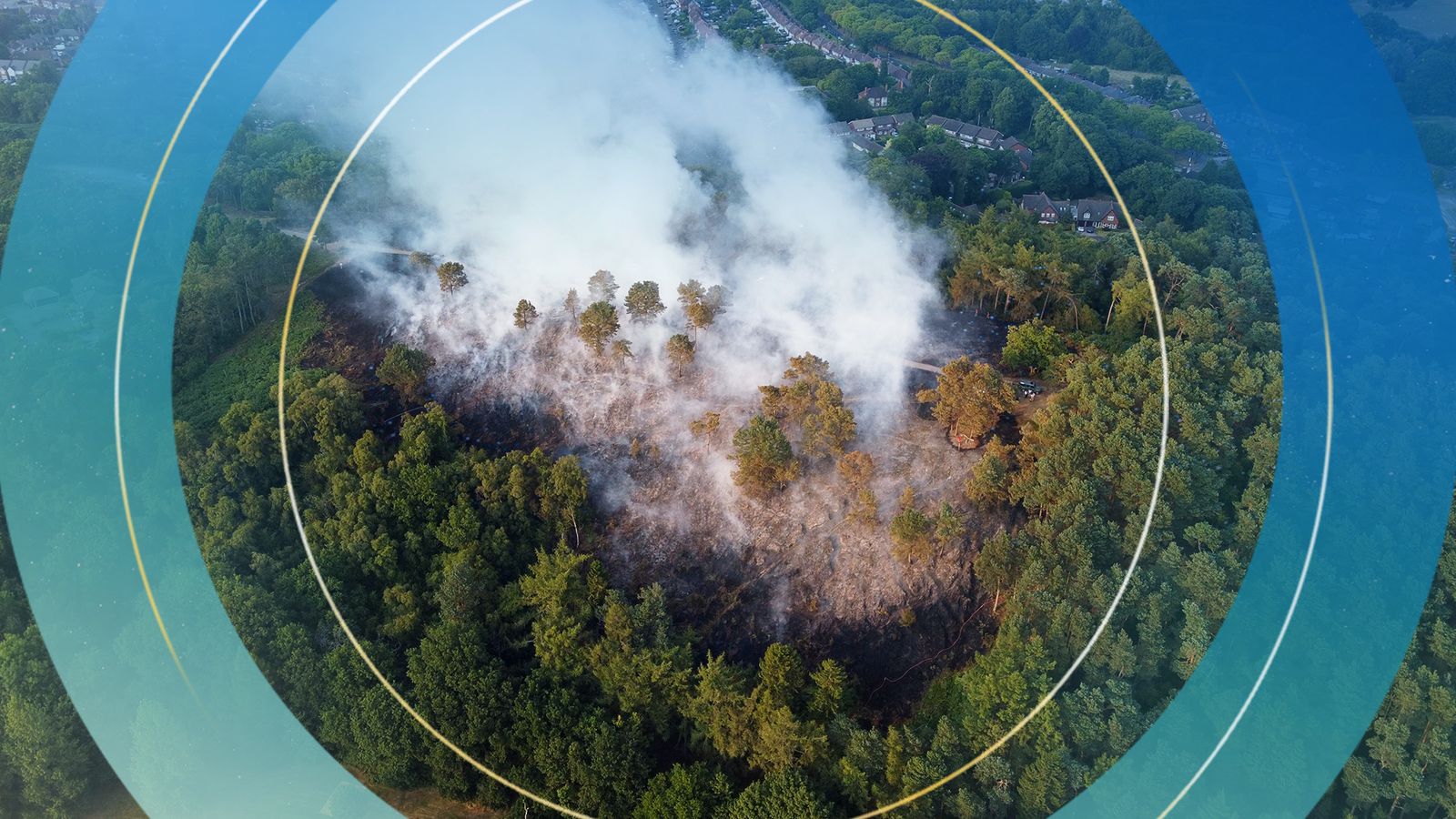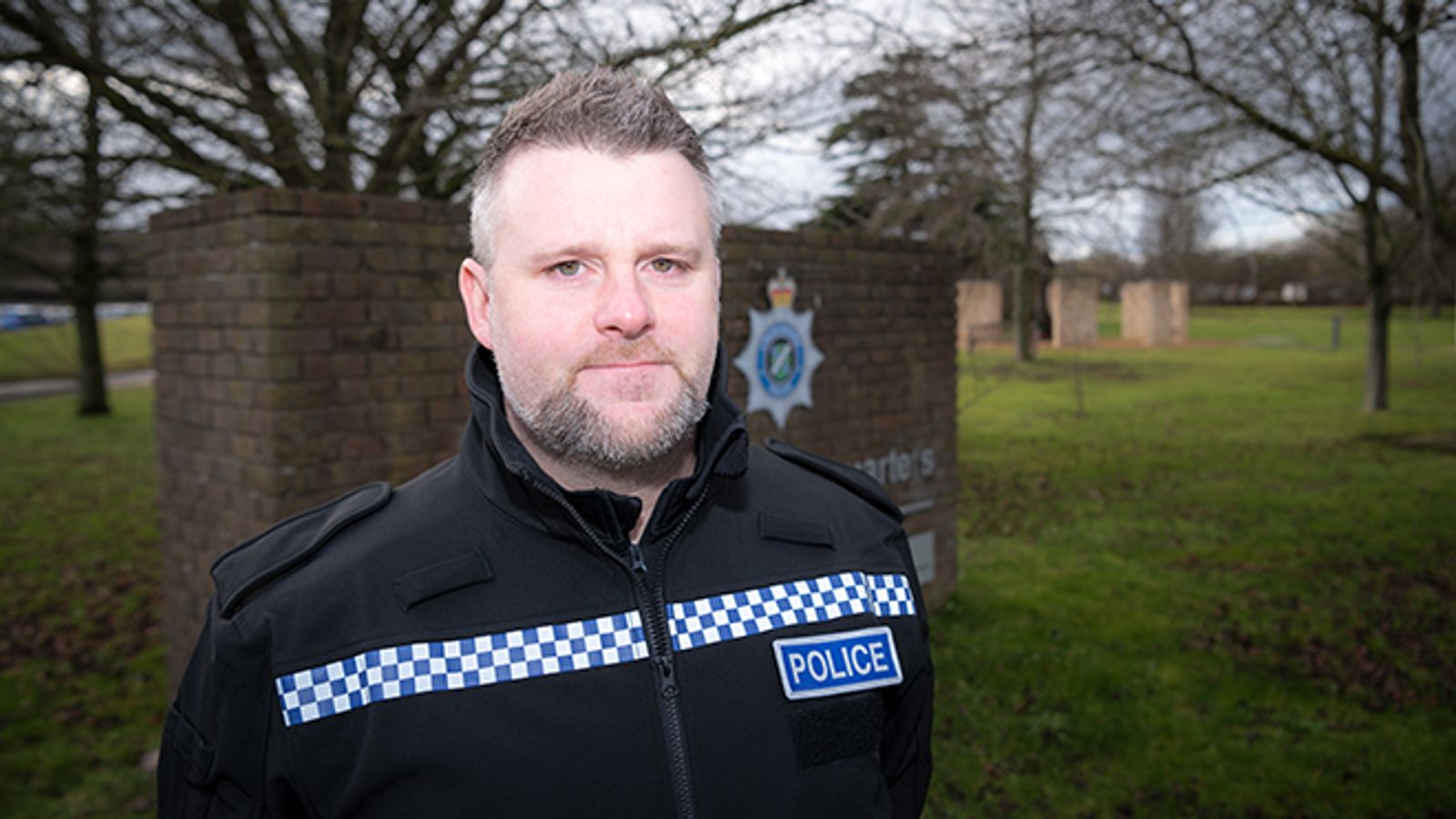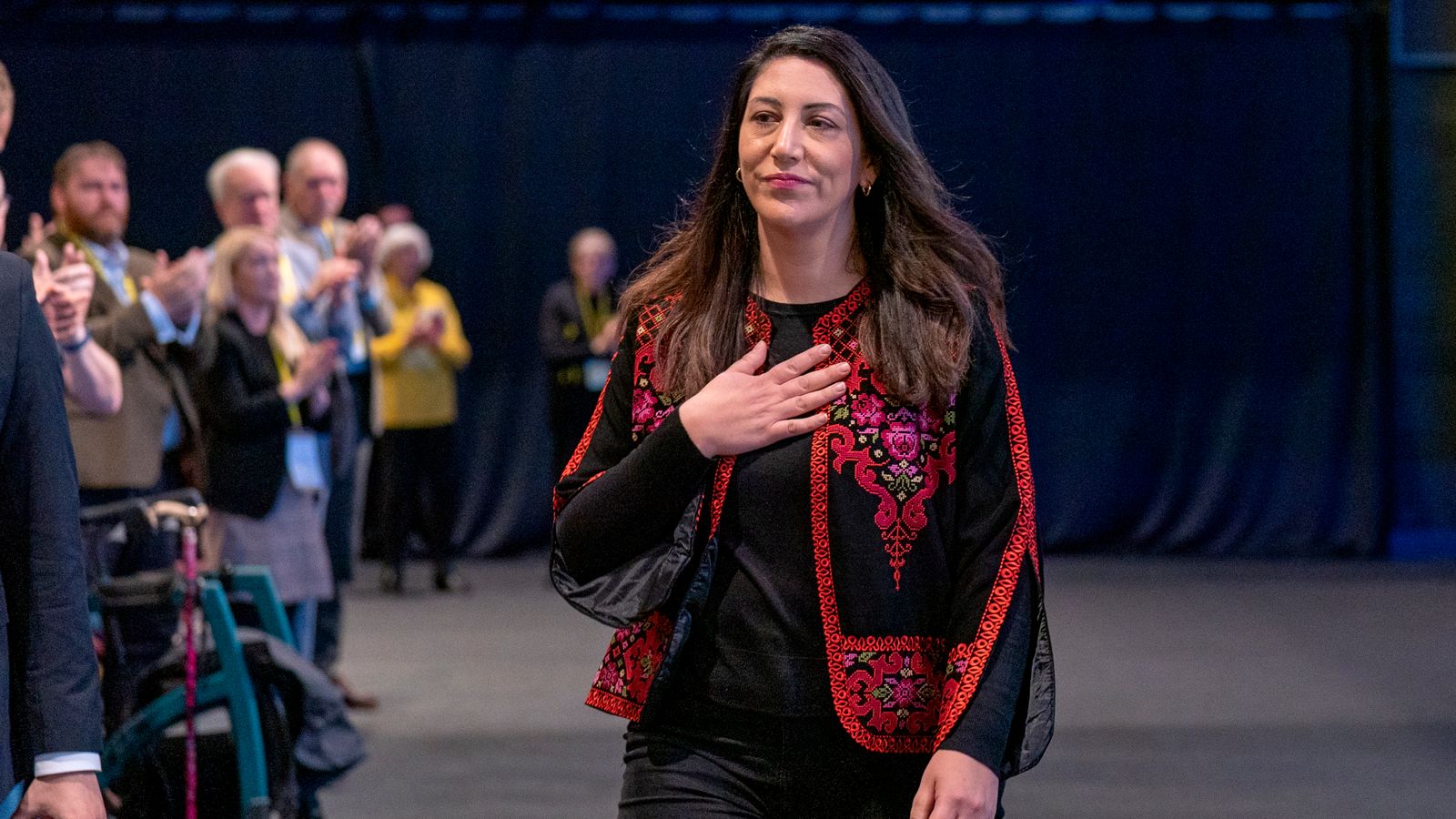Swathes of England and Wales are braced for “exceptional” risk from wildfires, as temperatures rise towards an expected 36C peak.
During the record-breaking heatwave last month, dozens of blazes broke out around the country, torching homes and fuelling the busiest day for London’s fire service since the Second World War, mayor Sadiq Khan said.
Where is the fire risk?
The Met Office has raised the fire severity index to exceptional – the highest level – for much of southern England, stretching as far west as Abergavenny in Wales, for this weekend.
Met Office meteorologist Marco Petagna said the risk is “very high across much of central, southern and eastern England”.
“Going into Friday and the weekend, it starts to increase further, going into the highest category of exceptional risk.”
The Met Office has also issued an amber heat warning in place between Thursday and Sunday. The temperature could surpass by far the threshold for a heatwave, which is 25-28C for much of southern England and eastern Wales.
What does the risk level mean?
The fire severity index (FSI) is not an assessment of the risk of a fire starting, but of how severe a fire could become if one broke out.
It takes into account things like wind speed, temperature, time of year, how dry the soil is and rainfall.
The ratings from 1 to 5 represent increasing severity, from low to moderate, high, very high and exceptional.
The FSI provides a trigger for fire prevention restrictions, which aim to minimise accidental fires on access land vulnerable to wildfires, by suspending certain access rights when conditions become exceptional.
Parts of the country also hit “exceptional” conditions in 1976, famed for its heatwave, and 1995.
How do you avoid starting a fire?
It is not just barbecues, fireworks and camp fires that can spark a blaze.
Cigarettes butts and bottles are also a risk and should be disposed of carefully. Sunlight shining through glass can start a fire.
People should only barbecue in designated areas on hard surfaces, away from trees and with water or sand nearby, and not take disposable BBQs into the countryside.
If you see flames, you should keep a safe distance and then call the fire service on 999, the National Fire Chiefs Council advises.
Please use Chrome browser for a more accessible video player
Why is the risk so high, and are wildfires caused by climate change?
The prolonged hot, dry weather has made everything “tinder dry” and left a lot of dead vegetation, said Nigel Arnell, professor of climate system science at Reading University.
Climate change is making the UK hotter, and hot weather evaporates more water from the ground, rivers and reservoirs.
It is also concentrating rain into fewer, more intense bursts, allowing the land to dry out more in between.
The risk of fire is “only going to get worse” as long as humans continue to trigger more greenhouse gases emissions that fuel the heating and drying, Prof Arnell warned.
Watch the Daily Climate Show at 3.30pm Monday to Friday, and The Climate Show with Tom Heap on Saturday and Sunday at 3.30pm and 7.30pm.
All on Sky News, on the Sky News website and app, on YouTube and Twitter.
The show investigates how global warming is changing our landscape and highlights solutions to the crisis.








